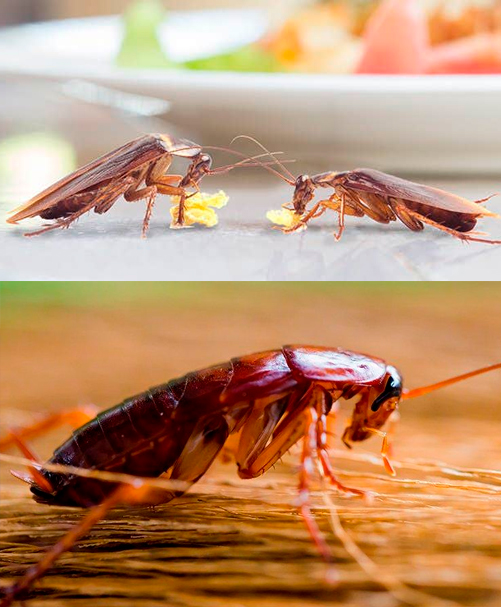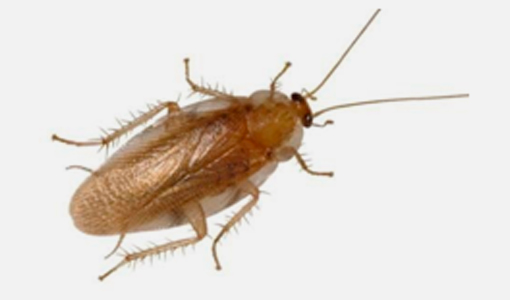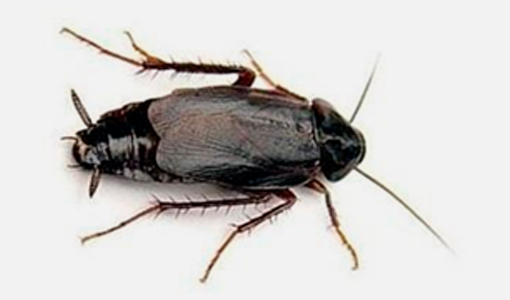Close relatives of termites and belong to the insect order Blattodea. They represent a primitive and highly successful group of animals whose origins extend back at least 300 million years. Fossil evidence suggests that little change in their general body form has occurred since that time.
As a group, cockroaches have exploited a drivers rang of ecologies, living among decaying leaf matter, under bark, in caves and burrows, on the foliage of shrubs and in the nests of social insects, boring into wood and even adopting a semi-aquatic habit. While there are about 3500 species of cock-roach worldwide, only about 10 species have seriously exploited the dwellings of humans. Some species have become very successful scavengers that cohabit with people in many, indeed most of the human communities around theworld
Despite their somewhat misleading common names, most pest cockroaches that occur in Australia and many other countries probably originated in tropical or subtropical Africa. Their wide distribution is attributed to transport in ships, carriages, and later trains and aero planes, facilitated by a remarkable degree of adaptation to build environments. In dwellings and various utilities for waste disposal, people have created conditions that make food, shelter and often suitable temperatures available to these very opportunistic insects. Their wide distribution and close association with humans, coupled with the high frequency with which they carry human diseases, in and on their bodies, have given them a Very high pest status in most parts of theworld.

Structure
Adult cockroaches are medium to large insects that, viewed from above, are mostly oval-shaped, with the head hidden beneath the pronotum. They are dorsoventrally flattened, so can make use of tight hiding places in cracks and crevices. Antennae are usually long and thread-like. Legs are often endowed with protective spikes and are suitable for crawling and running on a variety of surfaces. Compound eyes are usually well developed. Their primitive, chewing-type mouths parts allow them to exploit most types of food. Wings may be well developed, reduced or absent. In fully winged species the forewings arc narrower and leathery (called tegmina), covering and protecting the more membranous hind wings. Abdomen is large and carries a pair of often prominent cerci. Nymphs are generally similar to adults, except for the wings, genitalia and sometimes body coloring. Cockroaches can be divided three types commonly as follows,

German Cockroach
The German cockroach is a small species of cockroach, typically about 1.1 to 1.6 cm long. In colour it varies from tan to almost black, and it has two dark, roughly parallel, streaks on the pronotum
- Scientific name: Blattella
- Germanica Higher classification:
- Blattella Rank: Species

Oriental Cockroach
The oriental cockroach, also known as the waterbug or black beetle, is a large species of cockroach, adult males being 18–29 mm and adult females being 20–27 mm. It is dark brown or black in color and has a glossy body.
- Scientific name: Periplaneta
- Higher classification:
- Blatta Rank: Species

American cockroach
The American cockroach, also colloquially known as the waterbug, but not a true waterbug since it is not aquatic, or misidentified as the palmetto bug, is the largest species of common cockroach, and often considered a pest.
- Scientific name: Periplaneta
- Americana Rank: Species
- Higher classification: Periplaneta
Comparison of three common Cockroaches
| Cockroach | Germen Cockroach | Oriental Cockroach | American Cockroach |
|---|---|---|---|
| Size | 1.2 to 1.5 cm | 2.5 to 3.0 cm | 2.8 to 4.3 cm |
| Habitat | Warm humid optimum 32° C | 20 to 29° C | Warm humid optimum 32° C |
| Nymph | 6 – 12 weeks | 6 – 12 months | 4 – 15 months |
| Life span | 6 – 9 months | 1.0 to 1.5 years | 1.0 to 1.5 years |

Life cycle
Most cockroaches reproduce sexually and this often involves attractant pheromones (usually secreted by the female and detected by chemoreceptors on the male's antennae), court Ship procedures and end to end copulation. Eggs developed in the female are encapsulated in a purse - shaped egg case (ootheca) may contain about 12-40 eggs, depending on the species concerned and conditions of growth. The egg case may be dropped or glued to a surface just prior to, or months before, hatching. After hatching, the nymphs tend to congregate with the adults, coexisting in a somewhat gregarious manner. Nymphal development involves a number of moults and may take 2-4 months in some smaller species, or up to a year or more in others. Adult lifespan may be a few months to over a year, and in this time each female may produce about 5- 30 oothecae, depending on the species and conditions ofgrowth.
Habits
Typically, infestations of pest cockroaches develop in and around buildings and other structures that provide food, shelter, and often the preferred conditions of temperature and humidity. A commercial kitchen may support hundreds or even thousands of cockroaches at varying stages of development. They may be carried from place to place as live individuals or as egg cases, in foods and their packaging, luggage, furniture, buses, trains, ships and aero planes.
Why cockroaches are considered pests
Cockroach species that have established some type of cohabitation with humans are widely regarded as pests. While their role in the transmission of diseases to humans is usually the main concern, there are various reasons for pest status
Contamination
Cockroaches may contaminate food products, utensils and various areas with droppings, cast skins, empty egg cases, and dead cockroaches and vomit marks on surfaces.
Annoyance or fear reaction
Many people are annoyed or scared by the sight of cock-, roaches. This may be related to their fast, unpredictable movements and perhaps very spiky legs. Many find their presence abhorre
Odour
Where a substantial cockroach infestation exists, an unpleasant odour may develop, owing to secretions from the mouth and cuticle.
Allergic reactions
Some people are allergic to cockroaches. Extracts of cock-roaches can bring about positive skin reactions in sensitive people, and may cause an asthma attack in asthmatics. The allergen may be ingested where foods are contaminated with faeces, or inhaled when dried faeces becomes a part of house dust.
Bites
Cockroaches have been known to bite people although such incidences are rare. In ships where the cockroach population was exceedingly high, sailors have suffered bites and gnawing of the fingernails, toenails, calloused parts and occasionally softer skin.
Disease transmission
Cockroaches carry diseases of humans. Although cockroaches have never been irrefutably proved to have transmitted pathogenic diseases to humans, several factors point to the likelihood that they play an important role in such disease transmission: Cockroaches often dwell in environments that support the growth of organisms causing diseases harmful to humans (eg sewers, grease traps, other sources of polluted water).The same cockroaches may Contact various surfaces (including food) in kitchens and food processing or handling facilities.
Cockroaches are known to carry, on their cuticle and in their but and faeces, disease organisms of humans. Each cockroach may typically carry several million bacteria on and inside its body. A variety of disease organisms may be carried, including Salmonella (a genus of bacterial organ- isms that cause diseases, including food poisoning conditions, in humans and other animals), and other organisms causing gastroenteritis, dysentery, tuberculosis, hepatitis, typhoid fever and many other human disorders. Organisms that have been found naturally contaminating cockroaches include:
- Forty species of bacteria pathogenic tohumans;
- The eggs of seven species of worms parasitic tohumans;
- A variety of viruses potentially harmful to humans;and
- Several pathogenicprotozoa.
The health threat posed by cockroach populations that closet)r cohabit with humans is considered by most to be very serious. It is likely that cockroaches are responsible for much transmission of human diseases — perhaps most commonly intestinal-type diseases (eg Salmonella food poisoning). This reason by itself justifies, indeed, some would say necessitates, the control of cockroaches in premises.
Cockroach control
Effective control of pest cockroaches in and around buildings often relies on:
- A comprehensive inspection/survey of thebuilding(s);/li>
- A high standard of sanitation and hygiene, which will reduce the food, water and shelter that facilitate populationgrowth;
- The application of insecticides in a manner that makes likely their contact with thetarget insects; and
- Follow-up inspection and monitoring (that may involve the use of traps in somesituations).
Such a combination of chemical and non-chemical methods of control usually relies heavily on the co- operation of those in charge of the building concerned. Such co-oper-4110n is sometimes forthcoming, but unfortunately, often it is not.
The problem of infestation at some time after a treatment program is a very real one. One source of infestation may be the subsequent hatching of egg cases that were pre-tent during the treatment but not directly affected by insecticidal action. Alternatively, infestation may arise from untreated adjoining areas. Where possible, treatments in larger buildings should deal with all sites of infestation during the `Extended' treatment. This makes necessary an initial extensive survey and thorough inspection of all the areas concerned.